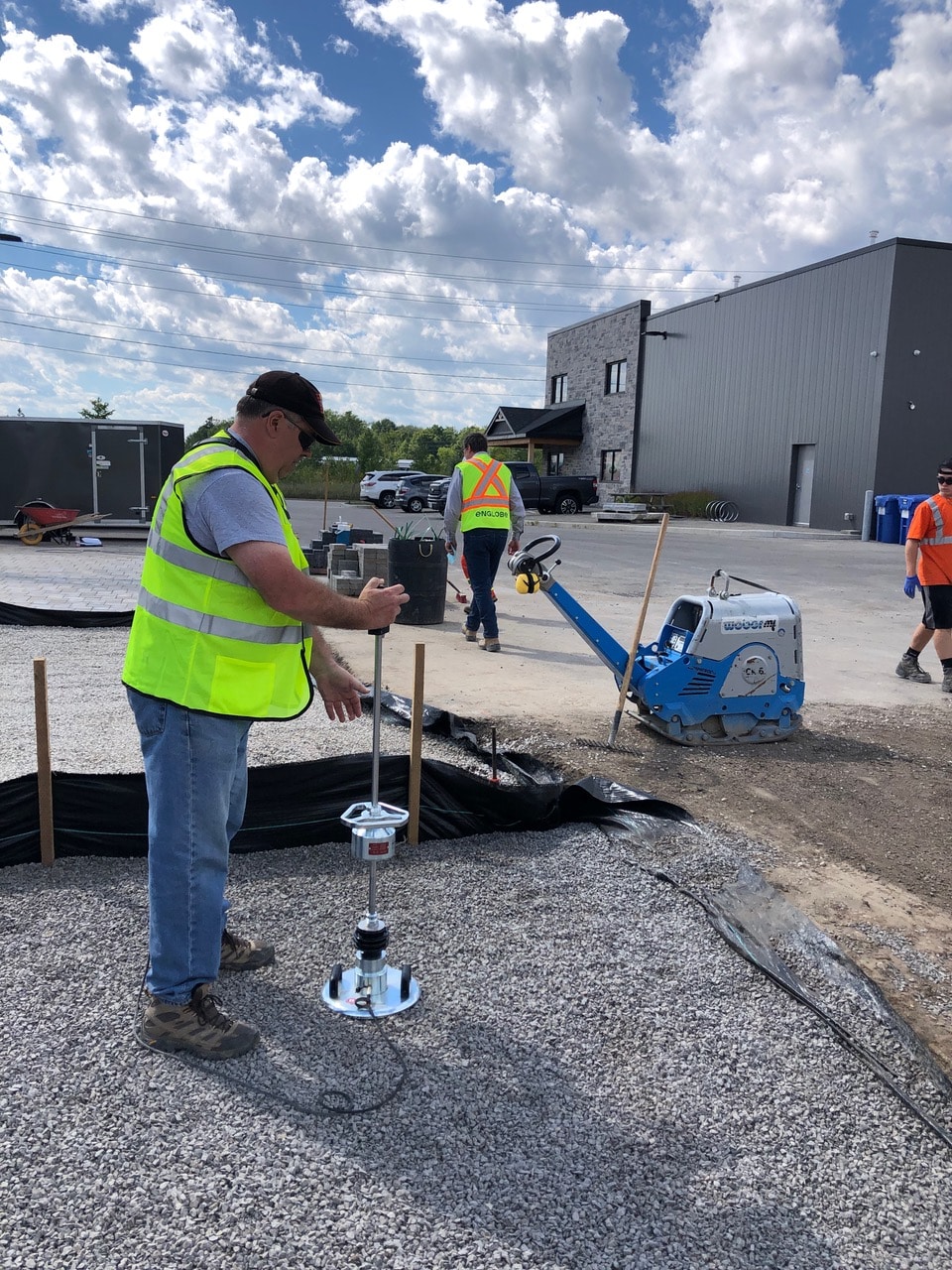This path combines technical expertise with creative problem-solving to create innovative solutions that enhance the functionality and beauty of outdoor spaces.

What Does an Engineer Do?
Hardscaping engineers play a critical role in the design and construction of durable and aesthetically pleasing outdoor spaces. As an engineer in the hardscaping industry, your responsibilities may include:
- Structural Design: Developing plans for patios, retaining walls, walkways, and other hardscape elements to ensure they are safe, functional, and visually appealing.
- Material Selection: Choosing appropriate materials like segmental concrete units, natural stone and composite materials based on project requirements and environmental conditions.
- Site Assessment: Analyzing soil, drainage, and other site conditions to inform design and construction decisions.
- Project Coordination: Working closely with designers, installers, and project managers to ensure seamless execution of projects.
- Innovation: Developing new techniques and solutions to improve efficiency, sustainability, and aesthetics in hardscaping projects.
Career Path
Starting as a hardscaping engineer offers numerous opportunities for career progression. Here’s a typical career trajectory:
- Junior Engineer: Begin your career by assisting senior engineers with design and analysis tasks.
- Project Engineer: Take on more responsibility, managing specific projects from concept through to completion.
- Senior Engineer: Lead complex projects, mentor junior engineers, and contribute to strategic planning.
- Engineering Manager: Oversee multiple projects and engineering teams, ensuring quality and efficiency across the board.
- Director of Engineering: Shape the direction of engineering within a company, focusing on innovation, research, and development.
Benefits of a Career in Engineering
Problem-Solving: Enjoy the challenge of developing innovative solutions to complex design and construction problems.
Diverse Projects: Work on a wide range of projects, from residential patios to large commercial installations.
Collaborative Environment: Partner with designers, installers, and other professionals to bring outdoor spaces to life.
Professional Growth: Continuous learning and development opportunities keep your skills sharp and your career advancing.
Impactful Work: See the tangible results of your engineering expertise in beautiful, functional outdoor spaces.
Ready to Get Started?
If you’re ready to pursue a career in hardscaping engineering, consider the following steps:
- Education: Obtain a degree in civil engineering, geotechnical engineering, or a related field.
- Experience: Gain practical experience through internships or entry-level positions in construction or landscape design.
- Certifications: Pursue certifications from professional organizations like the American Society of Civil Engineers (ASCE) or the National Society of Professional Engineers (NSPE) to enhance your qualifications.
- Networking: Connect with industry professionals to learn about job opportunities and stay current with industry trends.
Join the hardscaping industry as an engineer and contribute to creating beautiful, lasting outdoor spaces. Explore the opportunities for innovation, collaboration, and professional growth in a rewarding and dynamic field

A DAY IN THE LIFE OF
Bryan Horr, P.E.
Division Engineer, Segmental Pavements
“Every day brings something new—whether it’s supervising installations or teaching classes on permeable pavements.” – Bryan Horr, P.E., Division Engineer of Segmental Pavements at the Concrete Masonry & Hardscapes Association (CMHA)
Want to Hear More From Industry Pros?
Watch our video interviews from people pursuing careers in the industry.





